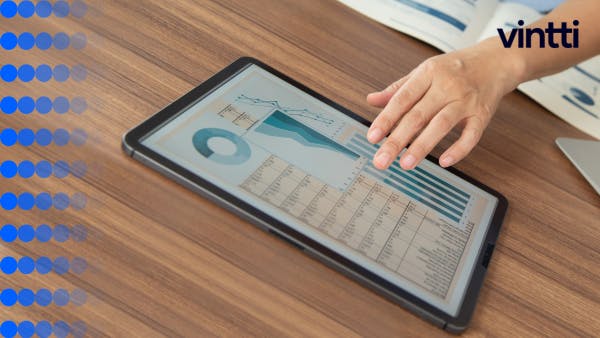Understanding amortization of intangibles is crucial for proper accounting and financial reporting.
This article will clearly explain the amortization of intangibles formula to help you accurately calculate and report these expenses.
You'll learn the definition of amortization, the reasons to amortize intangible assets, the most common methods used, and how to create an amortization schedule. With this knowledge, you'll improve compliance and enhance financial statement clarity regarding intangible assets.
Introduction to Amortization of Intangibles
Amortization of intangibles refers to the process of allocating the cost of intangible assets over their estimated useful lives. Intangible assets like patents, trademarks, copyrights, and goodwill have value, but lack physical substance. Since they diminish in value over time, companies amortize intangible assets to systematically allocate their costs as expenses on the income statement. Understanding amortization accounting helps businesses accurately report the value of intangible assets.
Understanding Amortization in Accounting
Amortization is the process of expensing the cost of an intangible asset over its estimated useful life. Similar to depreciation for tangible assets like property and equipment, amortization allows a company to allocate the costs of assets like patents or goodwill that lack physical form and diminish over time. By amortizing intangible assets, a company can match the asset's costs to the revenue it generates.
There are a few common methods for calculating amortization expense:
- Straight-line amortization: Expense is allocated evenly over the life of the asset
- Reducing balance method: Expense is higher in early years and declines over time
- Accelerated depreciation: Expense is much higher in early years compared to later years
On the income statement, amortization expense is deducted from revenue so net income accurately reflects performance.
Exploring the Value of Intangible Assets
There are many types of intangible assets that provide value to a company. Common intangible assets include:
- Goodwill: Value of a company's brand name, customer relations, etc.
- Patents: Proprietary inventions, formulas, and designs
- Trademarks: Protect names, slogans, logos that identify products/services
- Computer software: Programs, databases, and software systems
These assets can be very valuable but don't have physical substance. Amortizing them allocates costs and reduces their balance sheet value over time.
The Role of Amortization on the Income Statement
The purpose of amortizing intangible assets is to match their costs to the revenue they generate. Rather than immediately expensing the full cost, amortization spreads out the expense over multiple periods. This prevents distortions in income statement reporting.
For example, if a company purchases a patent worth $1 million that lasts 10 years, amortizing it would expense $100,000 per year rather than the full $1 million upfront. This matches the patent's cost to the revenue it earns each year.
Amortization also reduces the asset's carrying value on the balance sheet over time. This decline in value reflects the asset's diminishing utility and limited legal life.
Properly amortizing intangible assets has important implications for financial reporting accuracy and comparability across companies. It is a key concept in accounting that enables precise matching of revenues and expenses.
What is the formula for amortization of intangibles?
The formula for amortization of intangible assets is:
Annual Amortization = (Asset Cost - Residual Value) ÷ Useful Life
Where:
- Asset Cost: The amount paid to acquire the intangible asset
- Residual Value: The estimated value of the asset at the end of its useful life
- Useful Life: The number of years the asset is expected to contribute to the company
For example, if a company purchases software for $100,000 that is estimated to have a 5 year useful life and no residual value, the annual amortization would be:
Annual Amortization = ($100,000 - $0) ÷ 5 years
= $20,000 per year
This $20,000 will be recorded as an amortization expense on the income statement each year for 5 years, to allocate the software's cost over its expected period of benefit.
The amortization formula helps account for the decline in value of intangible assets over time. As opposed to tangible assets like buildings or equipment, intangible assets like patents, trademarks, and software do not have a physical form. But they still provide value and thus need to be expensed accordingly.
Proper amortization accounting leads to a more accurate financial picture on the balance sheet and income statement. It matches expenses to the periods that actually benefited from the intangible assets.
What is the formula for amortization in accounting?
The formula for amortization in accounting is:
Amortization expense = (Cost of intangible asset - Salvage value) / Useful life
Where:
- Cost of intangible asset: The amount paid to acquire the intangible asset
- Salvage value: The estimated value of the asset at the end of its useful life
- Useful life: The number of years over which the intangible asset provides value
For example, if a company purchases software for $100,000 that is estimated to have a 5 year useful life and no salvage value, the amortization expense would be calculated as:
Amortization expense = ($100,000 - $0) / 5 years
= $20,000 per year
This $20,000 amortization expense would be recorded on the company's income statement each year for 5 years, allocating the cost of the software over its expected period of benefit.
Some common intangible assets that are amortized include:
- Patents
- Copyrights
- Franchise rights
- Goodwill
- Software
It's important to accurately estimate an intangible asset's useful life when calculating amortization to match the expense to the periods expected to benefit from the asset.
How do you calculate intangibles in accounting?
The common way to determine the overall total value of a company's intangible assets is to subtract the company's book value (assets minus liabilities) from its market value. The difference is the value of the intangible assets.
To calculate intangible assets more specifically:
- Identify all intangible assets like patents, trademarks, copyrights, goodwill, etc. These are non-physical assets that still hold value.
- Determine the purchase price, development costs, or fair value assessment of each intangible asset. This establishes a base value.
- Estimate the useful life of each intangible asset. This is the number of years the asset is expected to provide value.
- Choose an amortization method like straight-line, units of production, or reducing balance. Straight-line is most common.
- Calculate the annual amortization expense for each intangible asset. This spreads the base value over the useful life.
- Record amortization expenses on the income statement, and update intangible asset values on the balance sheet each year.
- Assess intangibles for impairment periodically. This checks if values need to be reduced further.
Key details like purchase date, useful life, amortization method, and impairment losses are tracked for each intangible asset. Adding up the book values of all intangibles determines the total on the balance sheet.
Properly valuing and amortizing intangible assets over time is important for accurate financial reporting and determining a company's fair market value during acquisitions or other transactions. The calculations require estimates and assumptions, but following accounting guidelines helps standardize the process.
How do you explain amortization?
Amortization is an accounting method of allocating the cost of an intangible asset over its useful life. Similar to depreciation for tangible assets like equipment, amortization allows a company to spread out the cost of assets like patents, copyrights, trademarks, and goodwill over time.
The goal of amortization is to match the expense of acquiring an intangible asset to the revenue it generates. There are a few key things to know about amortization:
- It lowers the book value of intangible assets over time on the balance sheet
- The amortization expense is recorded on the income statement
- Common methods are straight-line or accelerated amortization
- Rates are based on the useful life of the intangible assets
- Goodwill has specific impairment testing requirements
For example, if a company buys a patent worth $100,000 with a 10 year useful life, $10,000 of amortization expense would be recorded each year for 10 years. This matches the cost of the patent to the estimated revenues it will generate.
Amortization provides a more accurate financial picture by spreading out expenses over time. It is a key concept in accounting for the value of intangible assets.
sbb-itb-beb59a9
Amortization Methods for Intangible Assets
Intangible assets like patents, trademarks, copyrights, and goodwill have value but lack physical substance. Companies use amortization to allocate the costs of these assets over their useful lives. The two main amortization methods are straight-line and accelerated.
Applying the Straight-Line Amortization Method
The straight-line method amortizes intangible assets at an equal amount each year over the asset's estimated useful life. For example, a patent with a legal life of 20 years would be amortized at 1/20th of its cost each year. Straight-line is commonly used because it is simple and results in a consistent amortization expense on the income statement.
Accelerated Depreciation and Amortization Techniques
Accelerated amortization methods allocate more costs in the early years and less in later years. Common accelerated methods include double-declining balance and sum-of-years-digits. These methods can provide tax advantages but may understate income in early years. They are less commonly used for intangibles than for tangible assets like property, plant, and equipment.
Selecting the Appropriate Amortization Strategy
Choosing the best amortization method depends on the intangible asset type, its estimated useful life and cash flows, as well as accounting and tax considerations. Straight-line is appropriate for assets with predictable benefits over time like trademarks. Accelerated methods match costs better with revenues for some short-lived assets like software. The method should reflect how the business uses the asset.
Accounting for Amortization Expenses
Amortization is the process of allocating the cost of intangible assets over their useful lives. Some common intangible assets that are amortized include patents, copyrights, trademarks, franchises, and goodwill.
To record amortization expense, companies determine the useful life of the intangible asset and systematically allocate the cost over that period. For example, if a company purchases a patent with a 10-year useful life for $100,000, the annual amortization expense would be $10,000 ($100,000/10 years).
The amortization expense is recorded on the income statement to reduce net income. It is also recorded on the balance sheet by accumulating amortization in a contra asset account, which reduces the net book value of the intangible over time.
Documenting Amortization Expense on Form 4562
IRS Form 4562 is used to report amortization and depreciation expenses for tax purposes. When recording amortization expense each period, the following steps should be taken:
- Identify all new intangible assets acquired during the tax year and determine their cost basis and estimated useful lives
- Calculate the amortization expense for both new and existing intangible assets
- Complete Part VI of Form 4562, entering the description, date acquired, cost basis, amortization method, life years, and amortization expense for each intangible
- Transfer the total amortization expense for all intangibles to Part I, line 42 of Form 4562
Documenting amortization expenses properly on Form 4562 ensures compliance with IRS regulations and allows the amortization to be deducted for tax purposes.
The Impact of Amortization on Financial Statements
Amortization expense impacts three key financial statements - the income statement, balance sheet, and statement of cash flows.
On the income statement, amortization is recorded as an operating expense, which reduces net income for the period. As such, it decreases profitability on paper.
On the balance sheet, accumulated amortization is shown as a contra-asset account, directly below the intangible asset. It has a credit balance that increases over time and reduces the net book value of the intangible.
Amortization is added back to net income on the statement of cash flows under operating activities. This is done because amortization is a non-cash expense that does not actually impact cash flow.
In summary, amortization decreases reported profits and asset values on financial statements, but does not reduce cash flow. Companies must analyze financial ratios like ROI and equity over time to assess true operating performance.
Tax Implications of Amortization of Intangibles
Under IRS section 197, the cost of most intangible assets can be amortized over 15 years for tax purposes. Qualified assets include goodwill, workforce, patents, copyrights, formulas, processes, designs, patterns, know-how, etc.
Key things to note regarding amortization and taxes:
- Amortization expenses are tax deductible over 15 years even if the financial accounting useful life is shorter
- The 15-year period starts when the intangible is acquired or created
- The straight-line depreciation method must be used with no salvage value
Claiming amortization expenses reduces taxable income over time. However, if the business is sold before the end of the 15-year schedule, the deductions must be recaptured and taxed as ordinary income. As such, modeling out the tax implications over time is crucial.
Amortization of Intangibles in Business Transactions
Amortization of intangibles is an important concept in accounting for acquisitions and other business transactions involving intangible assets like goodwill, patents, trademarks, and computer software. Properly estimating useful lives and testing for impairment are key to accurately recording amortization expenses.
Goodwill Impairment Accounting and Tests
Goodwill impairment testing is required at least annually under US GAAP accounting rules. Impairment exists when the carrying value of goodwill exceeds its fair value. Companies typically use discounted cash flow models to estimate fair value. If impairment exists, companies must record an impairment loss on their income statement equal to the difference between carrying value and fair value.
Determining the Useful Life of Intangible Assets
Under IAS 38, companies estimate the useful life of intangible assets based on the period over which the assets are expected to contribute economic benefits. Estimating useful lives requires judgment and should consider contractual terms, effects of obsolescence, and historical experience with similar assets. Incorrectly estimating useful life can lead to inaccurate amortization expenses over time.
Handling Amortization of Intangibles Post-Acquisition
When a company acquires another company, the purchase price is allocated across identifiable tangible and intangible assets acquired. The acquirer must estimate useful lives for the acquired intangible assets to calculate amortization expenses. Additionally, goodwill is recorded for any excess purchase price over the fair value of net assets. Goodwill impairment testing should be performed after acquisition to ensure carrying values remain appropriate.
Practical Steps for Amortization Calculation
Amortization is the process of allocating the cost of intangible assets over their useful lives. Here are practical steps to follow when calculating amortization for intangible assets:
Steps to Follow When Calculating Straight-Line Amortization
The straight-line method is the most common amortization technique. To calculate using this method:
-
Determine the cost of the intangible asset. This is generally the purchase price.
-
Estimate the useful life of the asset. This should be a reasonable approximation of how long the asset will provide value.
-
Divide the cost by the useful life. This gives the annual amortization expense.
For example, if a software license costs $12,000 and the useful life is estimated as 5 years, the annual amortization would be $12,000/5 = $2,400.
Using Reducing Balance Method for Amortization
The reducing balance method accelerates amortization, resulting in higher expenses in early years. To apply this technique:
-
Determine the amortization rate by dividing 100% by the estimated useful life. For a 5 year life, 100%/5 = 20%.
-
At the start of each year, multiply the unamortized cost by the amortization rate calculated above. This will decline each year as the asset loses value.
-
The amortization expense for each year is the result of step 2.
Creating an Amortization Schedule
An amortization schedule outlines projected amortization expenses over the life of the intangible asset. To build one:
-
List columns for year, beginning balance, amortization expense, ending balance.
-
The beginning balance for year 1 is the initial cost.
-
Calculate the amortization expense based on the method chosen.
-
Subtract the amortization expense each year to derive the ending balance.
Maintaining an amortization schedule ensures calculations are accurate and provides clarity into when intangibles will be fully amortized.
Conclusion: Amortization of Intangibles Synthesis
Amortization of intangibles is an important accounting concept for properly recording the declining value of intangible assets over time. Key points include:
Reaffirming the Importance of Accurate Amortization
- Accurately amortizing intangible assets is critical for reflecting their true economic value on the balance sheet over time.
- Using appropriate amortization methods allows companies to properly allocate the cost of intangibles as expenses on income statements.
- Precise amortization accounting also enables accurate calculations of tax deductions.
Reviewing Amortization Methods and Their Relevance
- Straight-line amortization evenly spreads costs over an asset's life. Useful for assets with predictable benefits over time.
- Accelerated methods like declining balance amortize more costs earlier on. Applicable for assets with front-loaded utility.
- Impairment testing procedures should be followed as well to check for unexpected declines in asset values.
Final Thoughts on Amortization and Company Finances
- Amortization accounting provides key insights into the realizable value of previously acquired intangibles.
- Careful amortization recording and analysis helps inform strategic decisions on capital allocation and investments.
- Overall, accurate amortization is vital for true financial reporting and health of company balance sheets.




